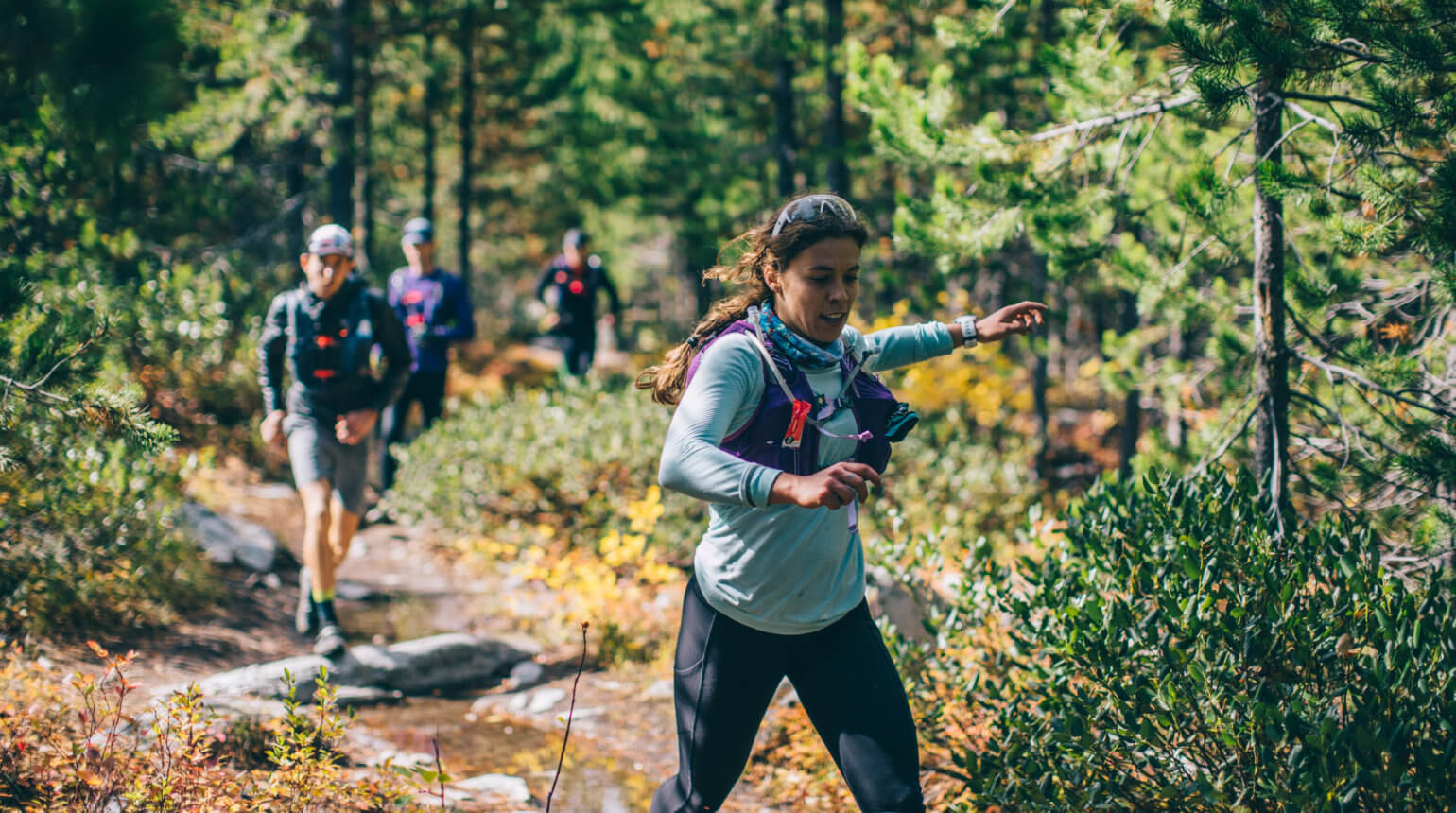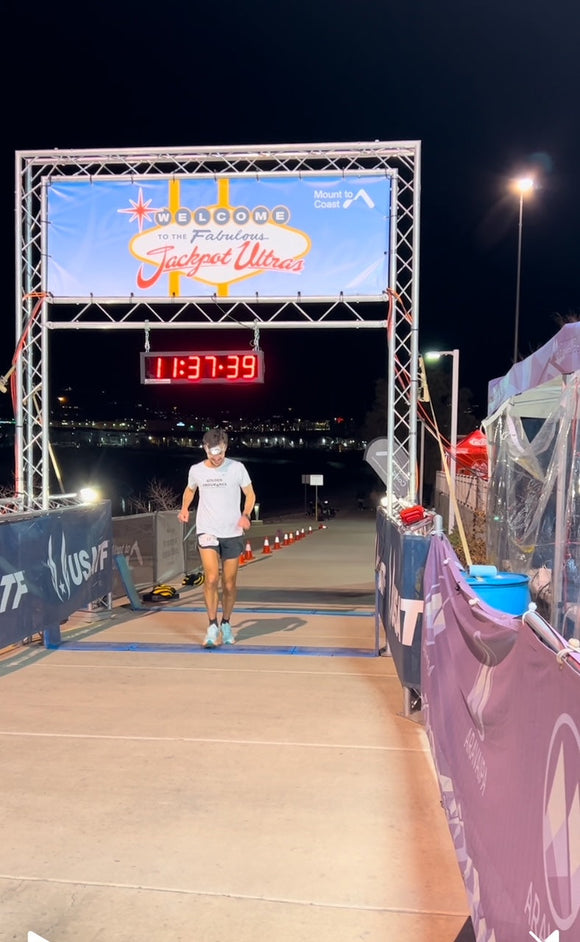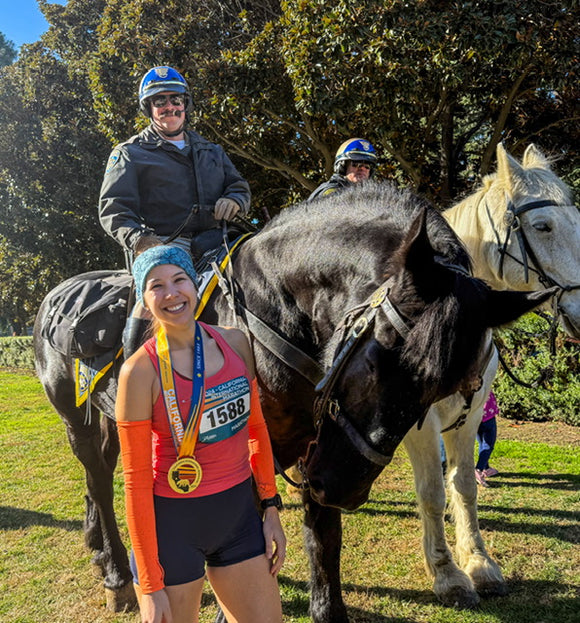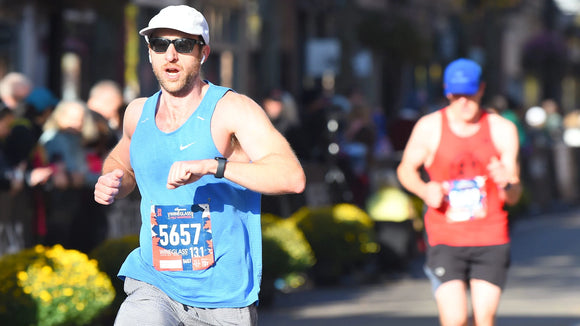Researchers theorize that natural settings feel less threatening and turn off our evolved stress response, but there might be more to it than that. “The ground beneath your feet demands 100% of your attention,” says running coach George Anderson. “It’s the perfect mindfulness practice. Every step needs careful consideration.” And, of course, your body will also reap the benefits, adjusting to the demands for core and hip stabilization that come from running on uneven terrain.
In short: it’s the season to hit the trail. But don’t just throw on your most beaten-up trainers and head out to the nearest wilderness – that’s the path to injury. We’ve assembled an everyman’s guide to getting outside your comfort zone, from taking your first (tiny) steps to competing in your first race. Thank us when you’re breathing that sweet, oxygenated air.
Trail Running Technique Tips
Once you leave the pavement, it’s less simple than left foot, right foot. Here’s how to change your movement from the ground up
Give your feet time to adjust
“The biggest mistake I see people making is making a complete switch suddenly,” says Dr Andrew Murray, an ultrarunner and consultant in sport and exercise at the University of Edinburgh. “Around 85% of running injuries are due to training error. This can be doing too much too soon – increasing volume by more than an average of 10-15% each week – or it can be by completely changing the terrain you’re running on. I’d advise making any change a gradual transition – start with a three-miler [5K], and increase your volume gradually.”
Run relaxed
You’re bound to be tense at first, and it messes up your running. “Running relaxed can enhance your lower body’s natural suspension system,” trail and ultra veteran George Anderson. “But it takes conscious effort to overcome the desire to stiffen the joints.” Check in with yourself every few hundred meters, and note when you’re stiffening up.
Use your arms
They’re an afterthought on the road, but crucial for efficiency on the trail. “Using your arms for balance is key,” says author and trail runner Tobias Mews. “Keep your arms – or at least your elbows – a little bit wider for added balance on more technical trails. You might need also need to lift your feet a little higher.”
…and your eyes
“Trails, by their very nature, are littered with hazards – stones, roots, drop-offs, scree, mud, sand and so on – which means that your senses need to be fully functional,” says Mews. “It helps not to be too obsessed with looking at your feet. Focus on looking a meter or so ahead to work out where you’re going to go for the next few strides.” Soon it’ll become second nature.
Don’t overdo it
“Running off-road requires a lot more balance than on the flat road surfaces you may be used to,” says Anderson. “Feet landing at funny angles and a constantly undulating gradient places increased demands on the stabilizers in the core and hips, so you’re always going to go slower than you do on the road. Run by time at first, rather than planning a run on distance and ending up taking an hour longer than you’ve planned.”
Aim for negative splits
“Start off slowly and assess how you’re feeling every few minutes,” says Anderson. “It’s always better to finish strong than to start strong and limp home with your muddy tail between your legs.” Don’t try to maintain a consistent pace throughout your run – you’ll need to run based on the terrain.
Assess first
“Alongside nutrition, the key to any form of running is to know your body,” says Mews. “Think of yourself like a car – you need to find the optimum speed that burns just the right amount of fat and carbohydrates without going anaerobic and overcooking yourself. The simple way to do it is to do a bleep test or if you have the chance, a VO2 max test – neither of which is much fun. But the results are useful.”
Race Tips
Go with the flow
“You can’t go for a minute-per-mile pace in a trail race,” says Mews. “So you need a shift in mindset to make that relaxing, rather than stressful. Think of it like this: instead of focusing on the details, you’re free to relax and go with the flow, even when you’re running hard.”
Practice your passing
“There’s a certain etiquette to passing people on narrow sections of trail,” says Mews. “It’s worth practicing – try nipping past people smoothly on training runs.”
Don’t get hung up on time
Even comparing races from year to year isn’t necessarily a great way to plan your race day pace: trail conditions can change due to weather, trail maintenance or even wildlife. One piece of advice that always applies: don’t go out too fast.
Perfect your fueling strategy
Going out for over two hours means eating on the move.
Pre-hydrate before you leave
The average person loses between 800ml and 1.4 liters of water an hour during exercise – more in the heat. Glug a bottle of water before you set off – and avoid booze the night before, since it impedes your body’s ability to produce the glucose your body needs for energy.
Take on custom chews in the early going
They’re favored by the old school but jelly babies are full of simple sugars that release quickly, causing a rush of water to the gut and possible stomach upsets. Look for maltodextrin chews, which your enzymes take longer to deal with.
Drink as you eat on the final stretchIf you’re sweating and moving fast, your blood flow’s going to your skin and muscles, not your gut. Dehydration worsens the effect, ruining digestion and upping your chances of bacterial infection. If you feel nauseous, slow down and take on more fluid.
Remember: leave no trace
If you’re used to lobbing your wrappers, get out of the habit now. You’ll typically be DQed for littering – so get used to carrying your empties.
Build A Trail-Proof Body With This Conditioning Workout
Off-road running demands more functional strength than sticking to the road does. Put a spring in your step with this single-leg circuit. Go through the whole thing, rest 90 seconds and repeat three times
1. Skater hops
Reps 4 each side
-
Jump from side to side, landing on your “far side” leg.
-
Start the push with your “drive” leg, don’t reach with the lead leg – this can diminish force application and risk your adductors.
2. Glute bridge
Reps 8
-
Lie on the floor with your feet flat on the ground and raise your hips.
-
Keep your feet as close to your glutes as you can: according to a study in Physical Therapy Korea, a 100˚ knee angle provides optimal glute activation.
3. Shrimp squat
Reps 4 each side
-
Stand tall with one foot behind you, held by the hand on the same side. – Bend your leading leg until your trailing knee touches the floor.
-
This move will build stability and strength in your ankles and knees.
4. Lateral lunge with pulse
Reps 6 each side
-
Take a big step out to the side and bend your leg.
-
Optional: hold your kitbag in front of your chest and push or “pulse” it ahead of you to improve core and frontal plane stability.
Written by Coach for Coach and legally licensed through the Matcha publisher network. Please direct all licensing questions to legal@getmatcha.com.
Photo by Andy Cochrane (@andrewfitts)



